Google Analytics(GA)is a website analysis tool used by 95% of marketers worldwide. Its simple and clear interface allows marketers to easily obtain detailed website data. Through GA, marketers can not only use data to help formulate effective marketing strategies but also observe consumer behavior on the website. The commonly used Universal Analytics version of GA will cease data collection entirely in July of this year, and past data will disappear. In its place, the new Google Analytics 4 (GA4) will be introduced. While getting used to the new interface of GA4 might take some time, its functionality has been comprehensively upgraded. It can collect more comprehensive and detailed data, while also reducing the difficulty for marketers in collecting data. Now, let’s take a look at the differences between Universal Analytics and the new GA4 with cacaFly Malaysia!
1. In response to the discontinuation of third-party cookies, GA4 provides a solution
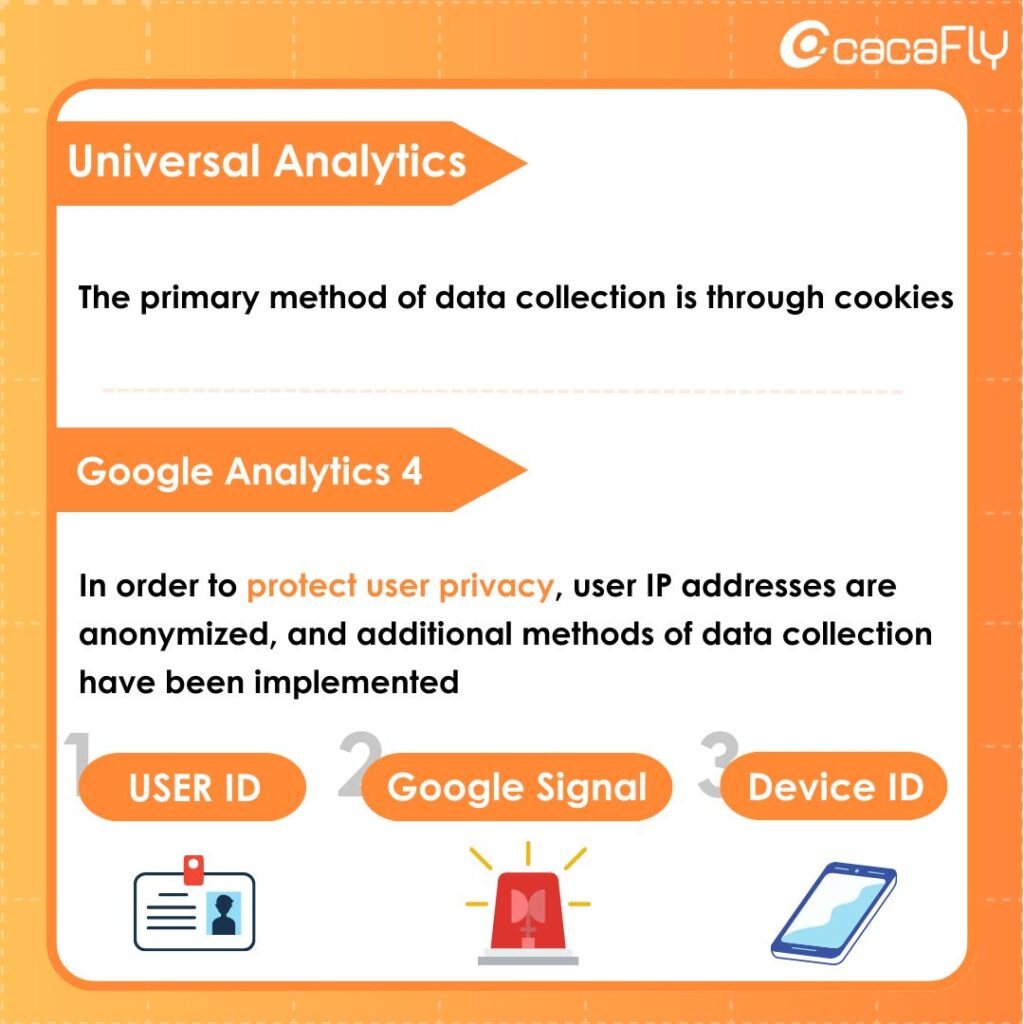
In the past, Universal Analytics primarily relied on cookies for tracking data collection. However, in 2024, due to the increasing awareness of privacy rights, cookies are set to be phased out, causing much concern among marketers. In response to this significant change, GA4 has made adjustments. GA4 identifies users using three methods: “User ID,””Google Signal,” and “Device ID.” With Google Signal enabled, even non-logged-in users can be tracked across devices and receive remarketing ads. Meanwhile, User ID is used to track logged-in users.
While Universal Analytics identifies users using cookies, the transition between devices or browsers by the same user may result in them being treated as different users. In contrast, GA4’s adoption of “User ID” and “Google Signal” reduces the chances of inaccuracies due to repetitive calculations, leading to more consistent and reliable results.
2. Cross-device tracking leads to more comprehensive data coverage
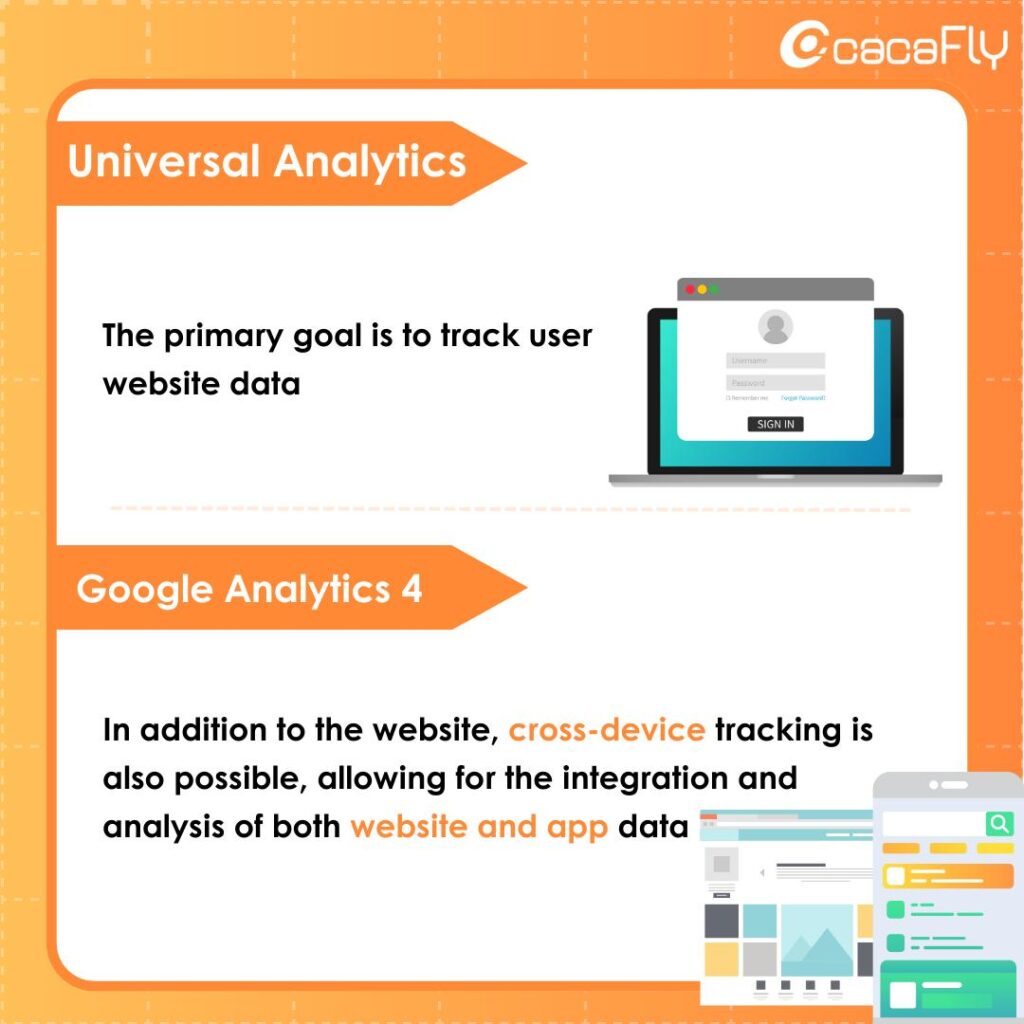
In the past, Universal Analytics primarily focused on tracking website data, while the new GA4 not only tracks website data but also tracks app data! By simply configuring the ‘Data Streams’ setting in GA4 to connect specific apps, brands can simultaneously monitor website and app data, making it more convenient to measure user behavior and data insights
3. The shortened retention period for historical data? Don’t worry! With BigQuery, you can store it indefinitely
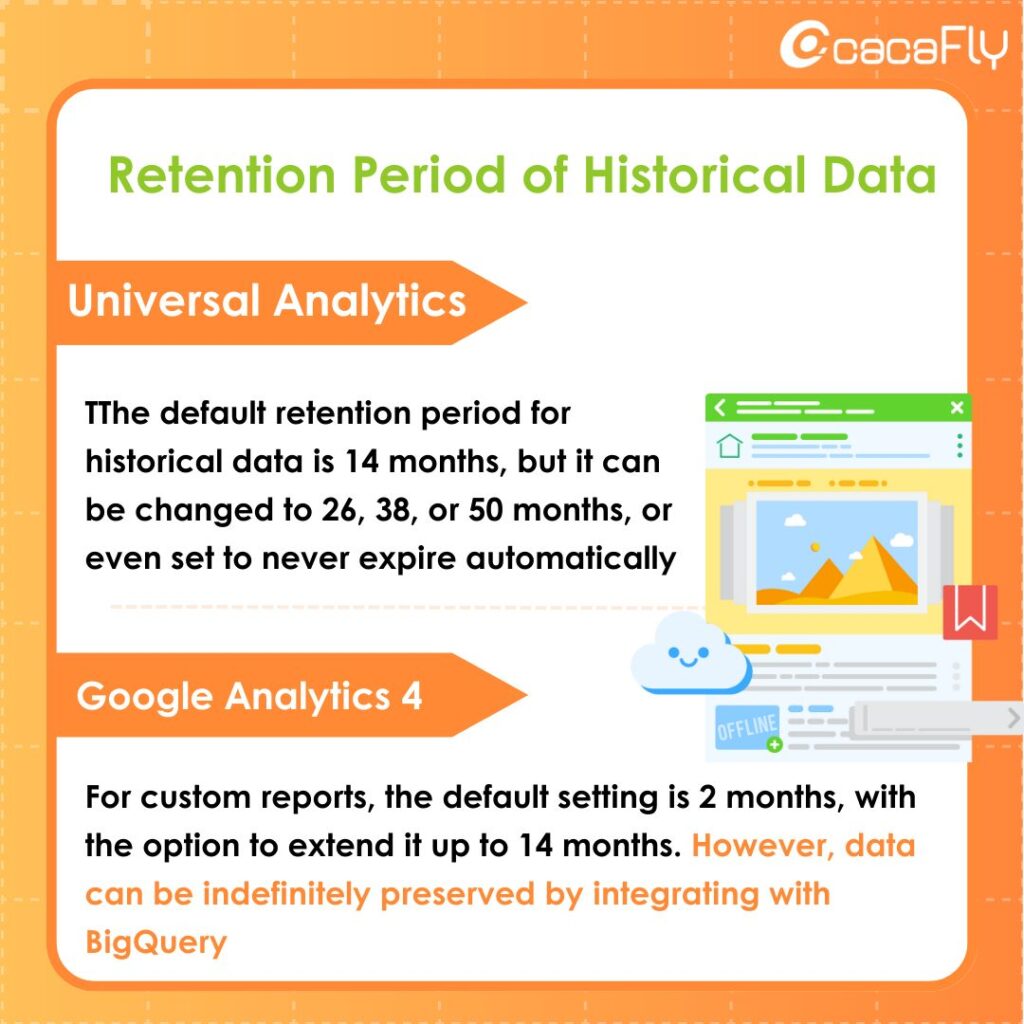
The default data retention period for Universal Analytics is set to 14 months, but marketers can manually adjust it to 26, 38, or even 50 months, or opt for no automatic expiration.
However, in GA4, user-level data (including conversion data) is retained for a default period of 2 months, with a maximum fixed period of 14 months. Data on age, gender, and interests are all subject to a two-month retention period. Nevertheless, GA4 can integrate with BigQuery to store data indefinitely, providing a free daily quota of 1 million events for permanent storage, which is generally sufficient for most businesses. Additionally, BigQuery operates efficiently, enabling queries and analyses of data volumes ranging from terabytes to petabytes to be completed in a matter of seconds
4. The account structure has become simpler
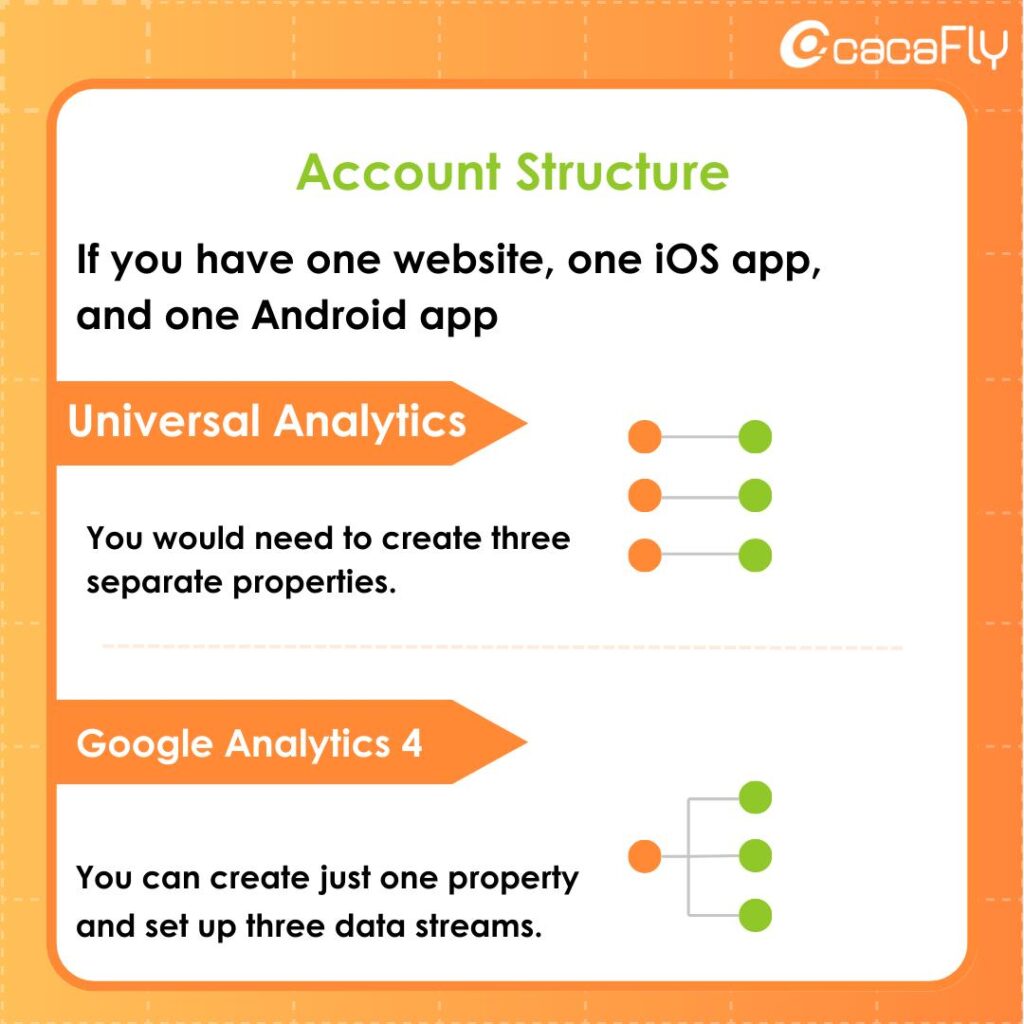
The account structure of Universal Analytics is more traditional, where if you have one website, one iOS app, and one Android app, you need to create three properties because one resource can only have one data set. However, in GA4, you only need to create one property and set up three data streams!
5. GA4’s tracking benchmarks have seen a significant upgrade, making it easier to analyze consumer behavior
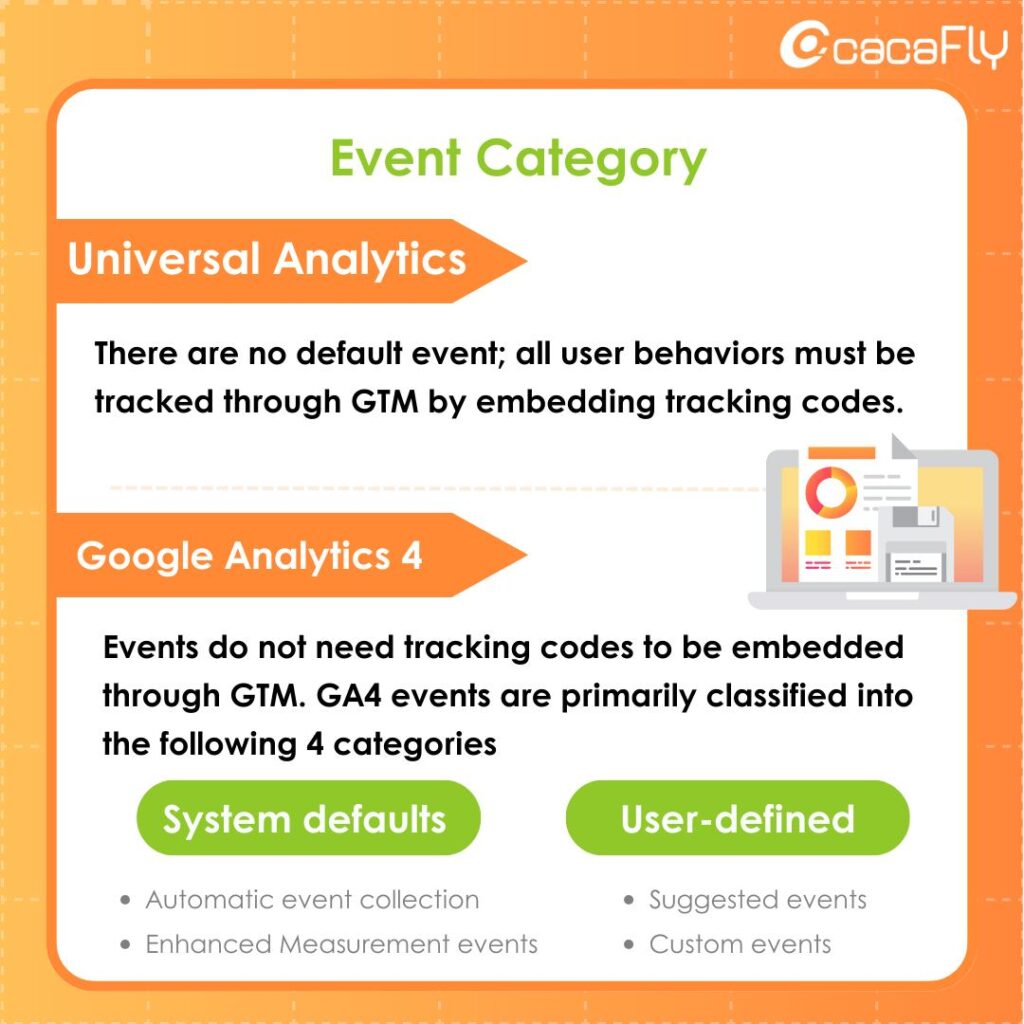
Universal Analytics primarily tracks data based on ‘sessions’ and does not have preset events; all events need to be obtained through embedding GTM tracking codes. In contrast, GA4 focuses on ‘events’ and allows for customizable events. It also enhances evaluation events with built-in web page views, scrolls, internal searches, and six other types of events. Marketers can gain a more detailed understanding of consumer behavior, enabling them to formulate effective marketing strategies
6. The new metrics in GA4 place a greater emphasis on user interaction
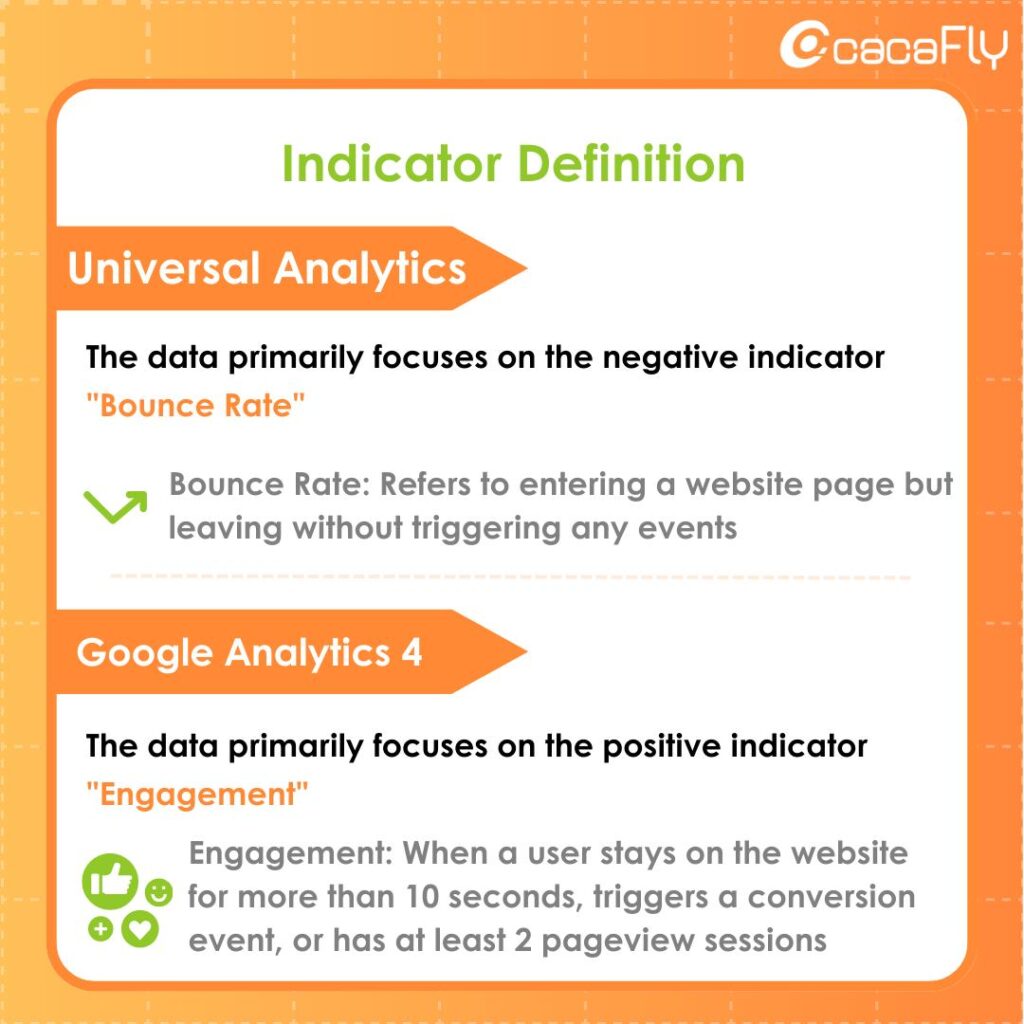
Universal Analytics primarily focuses on negative metrics like bounce rate, whereas GA4 emphasizes positive metrics like engagement rate, highlighting user interactions with pages. This helps marketers understand the proportion of active users within sessions
7. The flexibility for customizing reports is greater
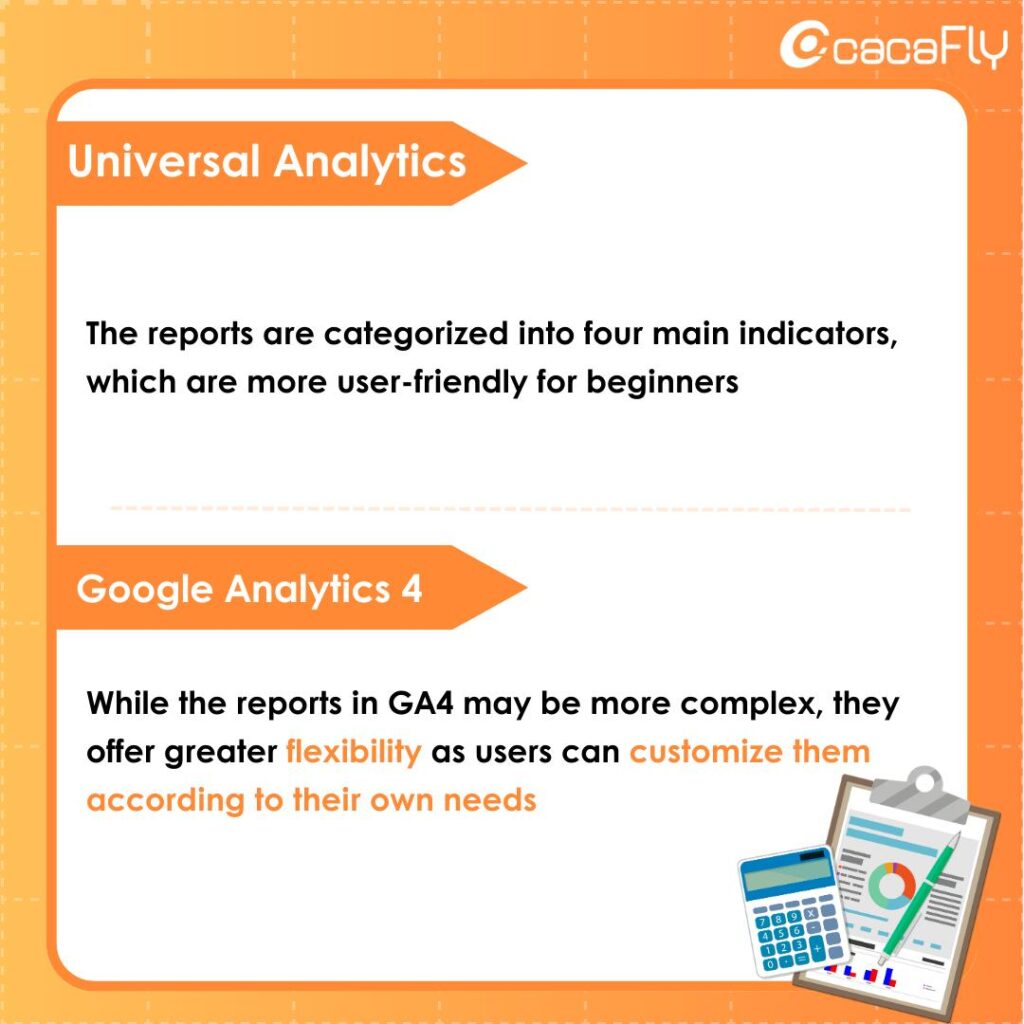
The reports in Universal Analytics are divided into four main categories (Audience, Acquisition, Behavior, and Conversions), which are user-friendly for beginners, and most marketers can generate them on their own. Compared to Universal Analytics, although GA4 is more complex, it allows for custom reports based on brand needs, enabling more detailed analysis!
With Universal Analytics phasing out, although it may take some time to get used to, overall, GA4’s analysis capabilities have been comprehensively upgraded! While focusing on conversions, don’t forget to take the time to back up your GA historical data before July
Do you need GA service ?
Contact us, and let cacaFly’s professional consulting team collaborate with you to create a bright new scenario!
Email: [email protected]
Mobile: 017-7486433
cacaFly Malaysia’s professional team consistently stays at the forefront of digital marketing, embracing a spirit of passion and integrity. We are committed to being the most reliable partner for our clients. Focused on providing end-to-end digital marketing services for both brand-oriented and performance-oriented clients, from initial research, mid-term advertising placement, MarTech applications, and content creation to later-stage data analysis and strategy optimization. We have assisted numerous brands and online stores in effectively improving performance and successfully expanding their online businesses. If you need advice on digital marketing strategy or advertising placement, contact our professional team now! You can PM cacaFly Malaysia on Facebook or email us


-5_page-0001.jpg)
-3_page-0001.jpg)

